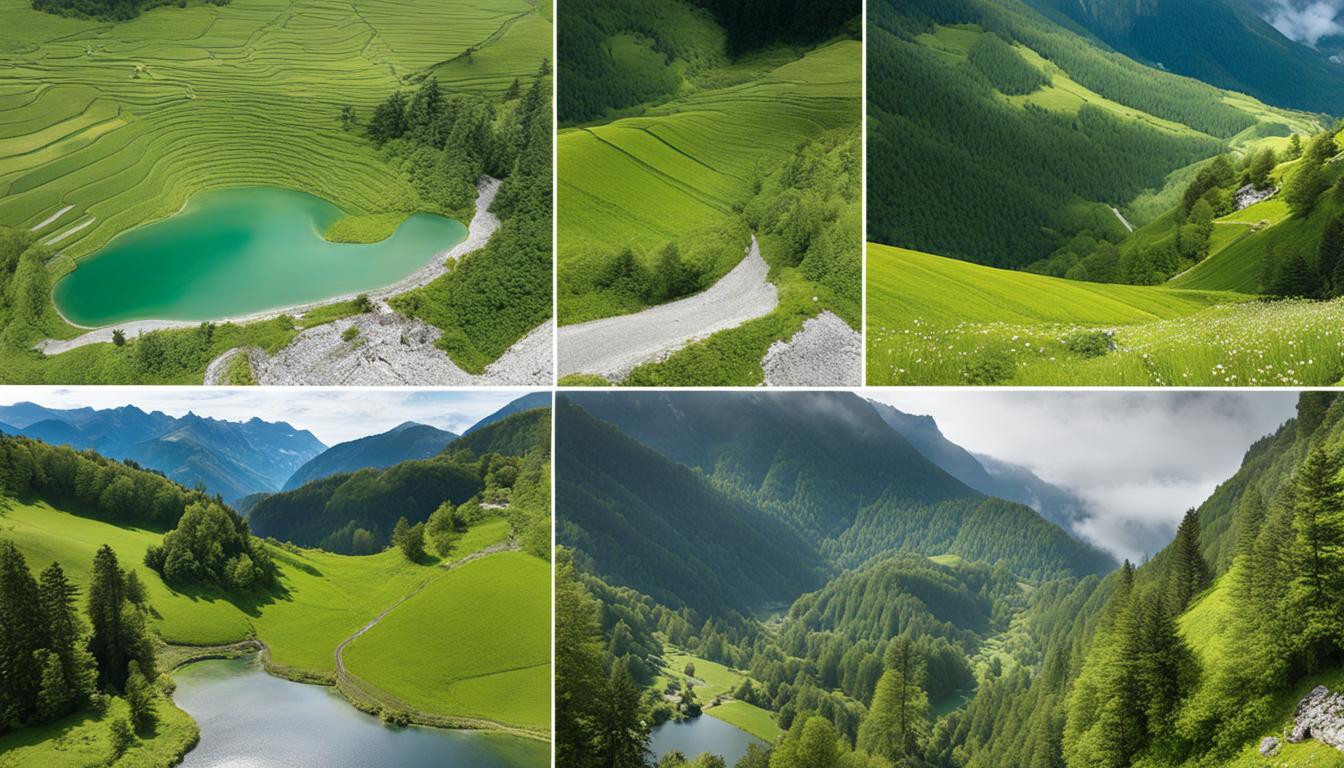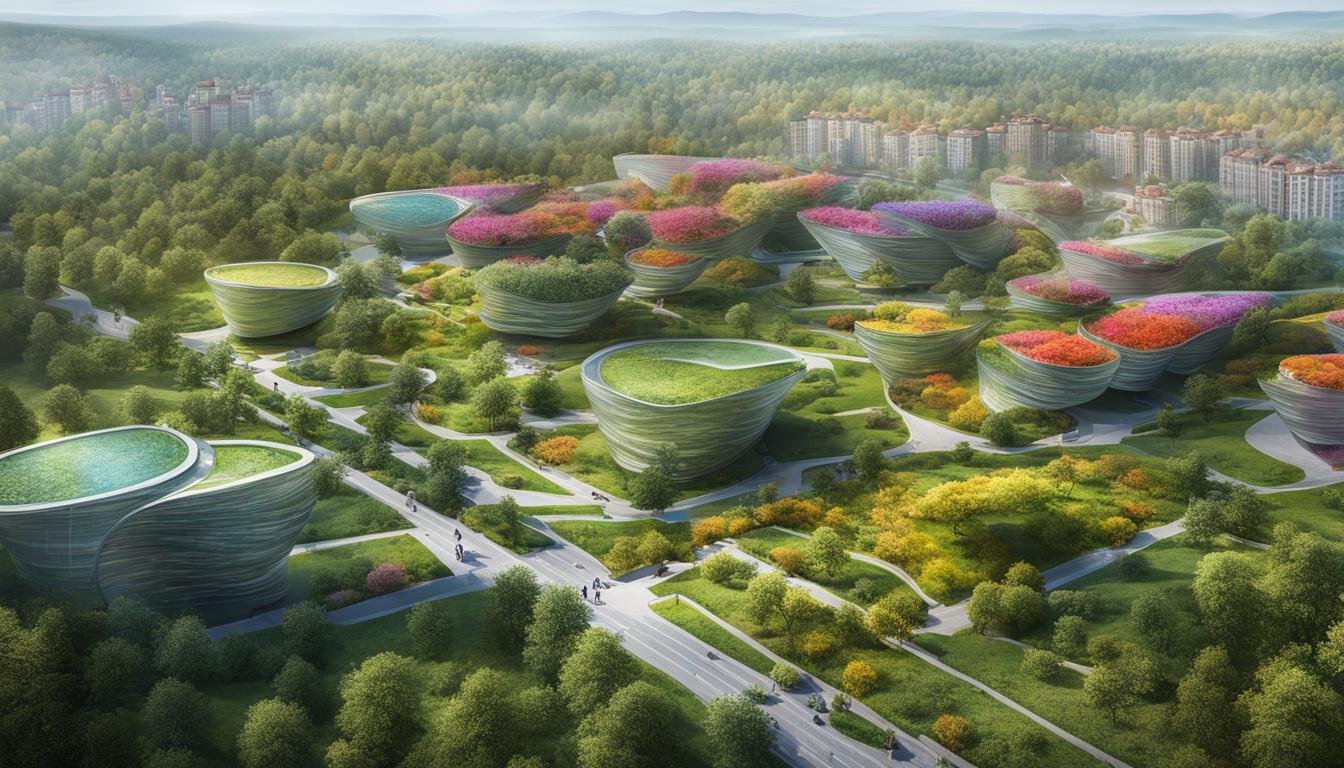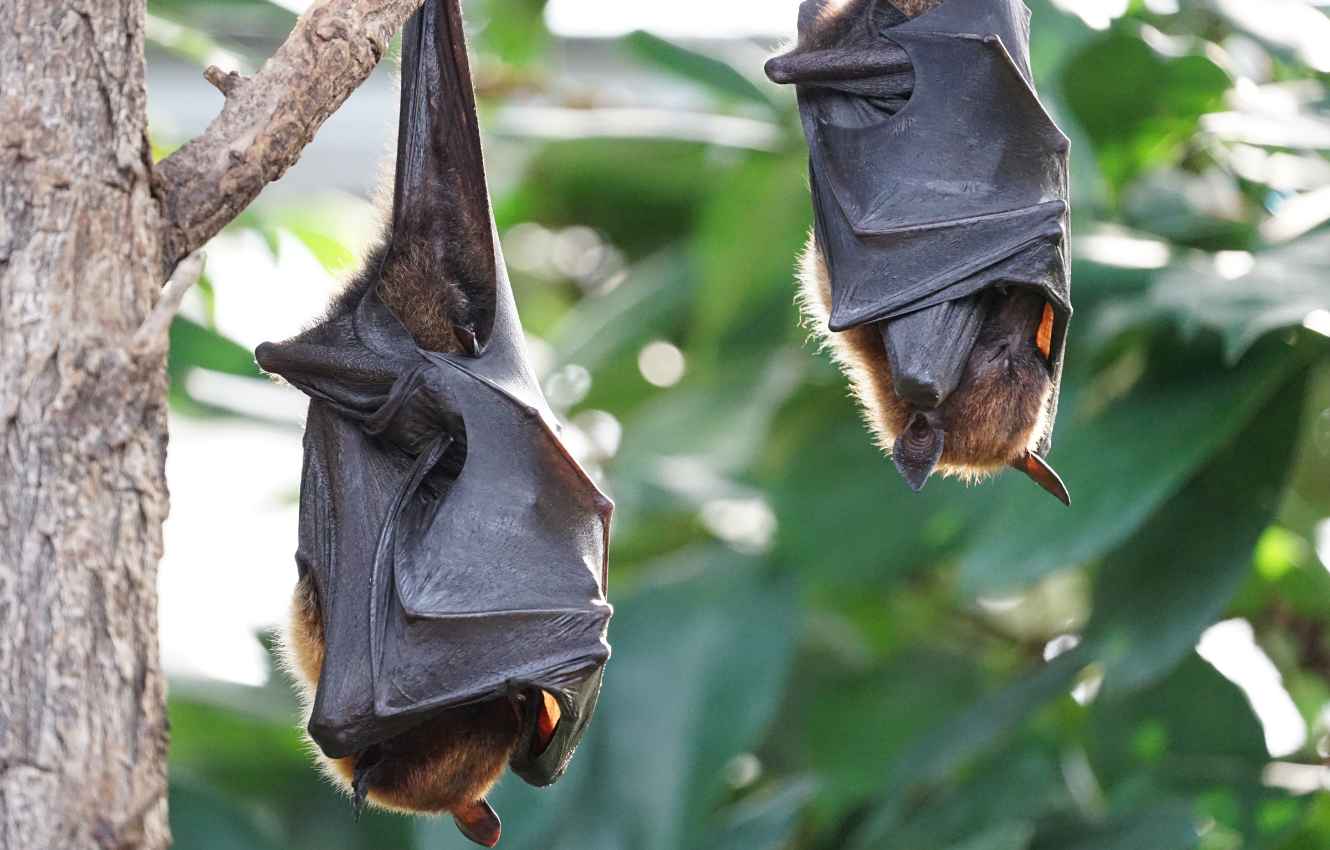Senegal Biodiversity and the Built Environment
Senegal, a country in West Africa, is known for its diverse wildlife and unique ecosystems. With its commitment to sustainable development and eco-friendly practices, Senegal aims to protect its rich biodiversity while promoting the importance of the built environment. In this article, we will explore Senegal’s efforts in biodiversity conservation, the key policies and governance approach in place, and the initiatives and development plans driving sustainable development in the country.
Key Takeaways
- Senegal prioritizes biodiversity conservation and sustainable development in its policies and initiatives.
- The Ministry of the Environment and Sustainable Development leads the efforts in coordinating biodiversity conservation.
- Protected areas have been established to preserve wildlife habitats and support endangered species.
- Challenges include integrating biodiversity into national planning, securing financial resources, and protecting endangered species.
- Senegal is making significant strides in eco-friendly architecture and construction practices, using raw earth bricks and solar power as sustainable alternatives.
Key Policies and Governance Approach
Senegal recognizes the importance of environmental protection and biodiversity research in the country. The Ministry of the Environment and Sustainable Development takes the lead in coordinating the efforts to conserve biodiversity. Senegal has developed a comprehensive National Biodiversity Strategy and Action Plan (NBSAP) to guide its conservation efforts. This strategic plan provides a framework for biodiversity research and outlines key policies and strategies for various aspects of conservation, including wetlands, marine protected areas, and plant genetic resources.
One of the main objectives of the NBSAP is to integrate biodiversity conservation into national planning processes. However, evaluations of the NBSAP have highlighted certain limitations in achieving this goal. To address these challenges, there is a need for improved legal frameworks and better access to financing for biodiversity conservation in Senegal’s environmental protection efforts.
The NBSAP also emphasizes the importance of green infrastructure initiatives in Senegal. Green infrastructure refers to the use of natural and semi-natural elements, such as forests, wetlands, and green spaces, to provide ecological and societal benefits. By incorporating green infrastructure into urban planning and development, Senegal aims to enhance biodiversity conservation, mitigate climate change impacts, and improve the quality of life for its citizens.
Furthermore, the NBSAP promotes the establishment of protected areas and the sustainable management of natural resources. Senegal has made significant progress in this regard, with the creation of national parks, wildlife reserves, and marine protected areas. These protected areas play a crucial role in preserving Senegal’s unique ecosystems, supporting endangered species, and maintaining the country’s biodiversity.
In summary, Senegal’s key policies and governance approach prioritize the conservation of biodiversity through the National Biodiversity Strategy and Action Plan. By integrating biodiversity considerations into national planning, implementing green infrastructure initiatives, and establishing protected areas, Senegal is making substantial efforts to safeguard its natural heritage and promote sustainable development.
Key Policies and Strategies
The National Biodiversity Strategy and Action Plan (NBSAP) in Senegal focuses on several key policies and strategies:
- Conservation and management of wetlands
- Marine protected areas and sustainable fishing practices
- Conservation and utilization of plant genetic resources
These policies and strategies aim to protect and sustainably manage important ecosystems, such as wetlands and marine environments, while conserving essential plant species for agriculture and food security.
“Integrating biodiversity into national planning is crucial for the long-term conservation of Senegal’s unique and diverse ecosystems.” – Ministry of the Environment and Sustainable Development
| Policies and Strategies | Objectives |
|---|---|
| Conservation and management of wetlands | To safeguard the integrity and biodiversity of wetland ecosystems through effective management plans and sustainable practices. |
| Marine protected areas and sustainable fishing practices | To establish and manage marine protected areas for the conservation of marine biodiversity and the promotion of sustainable fishing practices. |
| Conservation and utilization of plant genetic resources | To conserve, utilize, and share the diverse plant genetic resources of Senegal, contributing to sustainable agriculture and ensuring food security. |
Image: A diverse range of ecosystems in Senegal, highlighting the importance of conservation efforts.
Biodiversity Policies and Strategies in Senegal
In alignment with its commitment to environmental protection, Senegal has established policies and strategies specifically tailored to protect its diverse ecosystems and species. These initiatives are crucial for the sustainable development of the country.
Wetlands Policy
The Wetlands Policy in Senegal safeguards the integrity and biodiversity of wetlands through comprehensive management plans and sustainable practices. By implementing this policy, Senegal can ensure the conservation of wetland habitats, the protection of endangered species, and the sustainable use of resources. This critical approach recognizes the importance of preserving wetland ecosystems, which provide essential services such as water purification, flood control, and carbon sequestration.
Marine Protected Areas Strategy
Senegal has also developed a Marine Protected Areas (MPA) Strategy aimed at the creation and management of marine protected areas. These MPAs play a vital role in biodiversity conservation and sustainable fishing practices. By establishing designated areas, Senegal can protect marine habitats, safeguard key species, and sustainably manage fisheries. This strategy promotes the conservation of marine biodiversity while ensuring the long-term socioeconomic benefits derived from coastal and marine resources in Senegal.
Plant Genetic Resources Conservation
Senegal recognizes the importance of conserving its diverse plant genetic resources, which are essential for sustainable agriculture and food security. The country has implemented policies to conserve, utilize, and share these resources. By preserving the genetic diversity of plant species, Senegal can enhance resilience to environmental changes, improve crop productivity, and contribute to global efforts for sustainable food production.
These biodiversity policies and strategies highlight Senegal’s commitment to preserving its natural heritage and promoting sustainable development. By actively protecting its ecosystems, establishing protected areas, and conserving plant genetic resources, Senegal is taking significant steps towards a greener future.
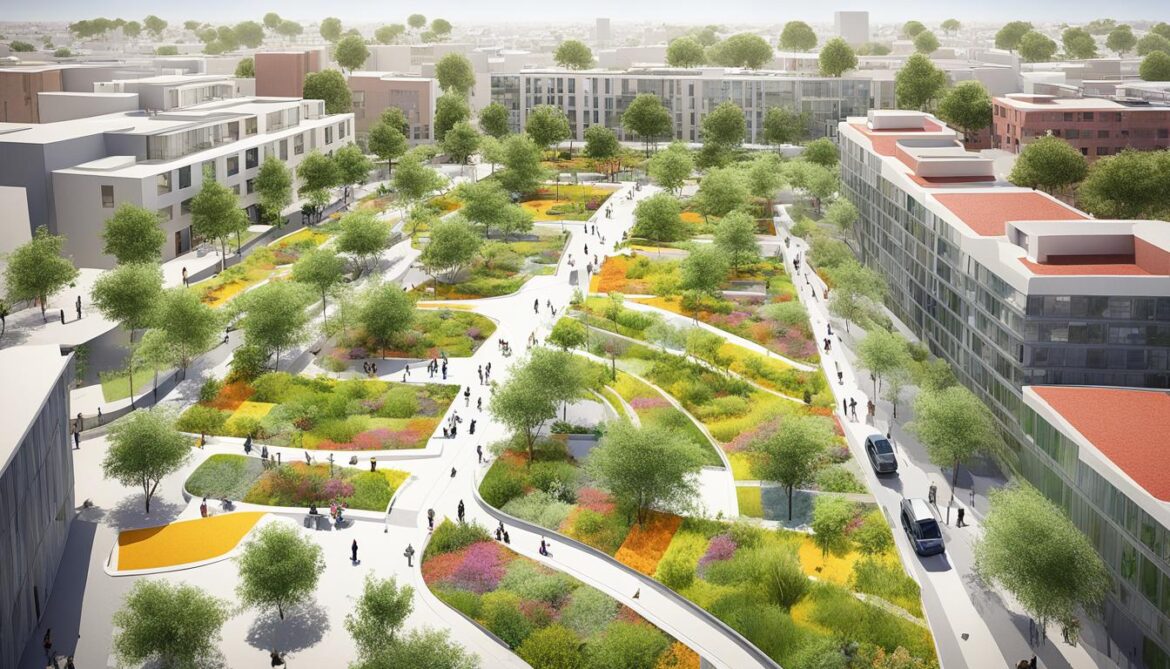
| Initiatives | Description |
|---|---|
| Wetlands Policy | Safeguards the integrity and biodiversity of wetlands through management plans and sustainable practices. |
| Marine Protected Areas Strategy | Focuses on the creation and management of marine protected areas for biodiversity conservation and sustainable fishing. |
| Plant Genetic Resources Conservation | Implementation of policies to conserve, utilize, and share diverse plant genetic resources for sustainable agriculture and food security. |
Successes and Remaining Challenges
Senegal has made significant strides in its conservation efforts to protect the country’s rich biodiversity. Through the establishment of a network of protected areas, including national parks, wildlife reserves, and marine protected areas, Senegal has created safe havens for diverse ecosystems and endangered species.
These conservation initiatives have yielded positive results, with populations of endangered species stabilizing and even experiencing growth in some cases. This demonstrates the effectiveness of the efforts and the importance of ongoing conservation in Senegal.
However, despite these successes, there are still challenges that need to be addressed. One of these challenges is the integration of biodiversity into urban planning processes. It is crucial to incorporate conservation considerations in urban development to create sustainable cities that coexist harmoniously with the natural environment.
Another challenge is the harmonization of legislative texts related to biodiversity conservation. Streamlining and aligning regulations and policies can enhance coordination and effectiveness in preserving Senegal’s biodiversity.
Furthermore, mobilizing financial resources to support conservation efforts remains a key challenge. Adequate funding is essential for implementing conservation projects, conducting research, and supporting the livelihoods of local communities involved in conservation activities.
Improved knowledge and data on biodiversity, especially in marine environments, are crucial for targeted conservation efforts and effective management practices. Enhancing scientific research and monitoring systems will provide valuable insights into the state of biodiversity in Senegal and inform conservation strategies.
Despite the progress made, it is essential for Senegal to continue addressing these challenges to ensure the long-term sustainability of its conservation efforts and protect its unique biodiversity.
Overcoming these obstacles requires collaboration between stakeholders, including government agencies, NGOs, local communities, and international partners. By working together, Senegal can continue to make a positive impact on conservation and promote sustainable development.

Key Successes and Challenges in Senegal’s Conservation Efforts
| Successes | Challenges |
|---|---|
| Establishment of protected areas | Integration of biodiversity into urban planning |
| Stabilization and growth of endangered species populations | Harmonization of legislative texts |
| Positive impact on ecosystems and habitats | Mobilizing financial resources |
| Collaboration between stakeholders | Improved knowledge and data on biodiversity |
Initiatives and Development Plans
Senegal is dedicated to safeguarding its biodiversity and driving sustainable development. The country has undertaken several initiatives and development plans to protect its natural resources and mitigate the impact of strong swells on farming and nature plots.
An essential component of Senegal’s biodiversity conservation efforts is the Senegalese National Information System on Biodiversity (SENBIO-INFOS). This centralized database serves as a valuable resource for researchers, policymakers, and conservationists, providing access to comprehensive information about Senegal’s diverse biodiversity.
Recognizing the importance of financial support, Senegal has secured assistance from the French Development Agency (AFD) for various biodiversity conservation initiatives. This partnership enables the implementation of crucial projects that contribute to the preservation of Senegal’s unique ecosystems and species.
One notable program launched by Senegal is the “Ecovillages” Program. This initiative promotes sustainable livelihoods, environmental stewardship, and the effective management of natural resources. By focusing on grassroots-level engagement, the program empowers local communities to actively participate in sustainable development practices, fostering a harmonious relationship between humans and the environment.
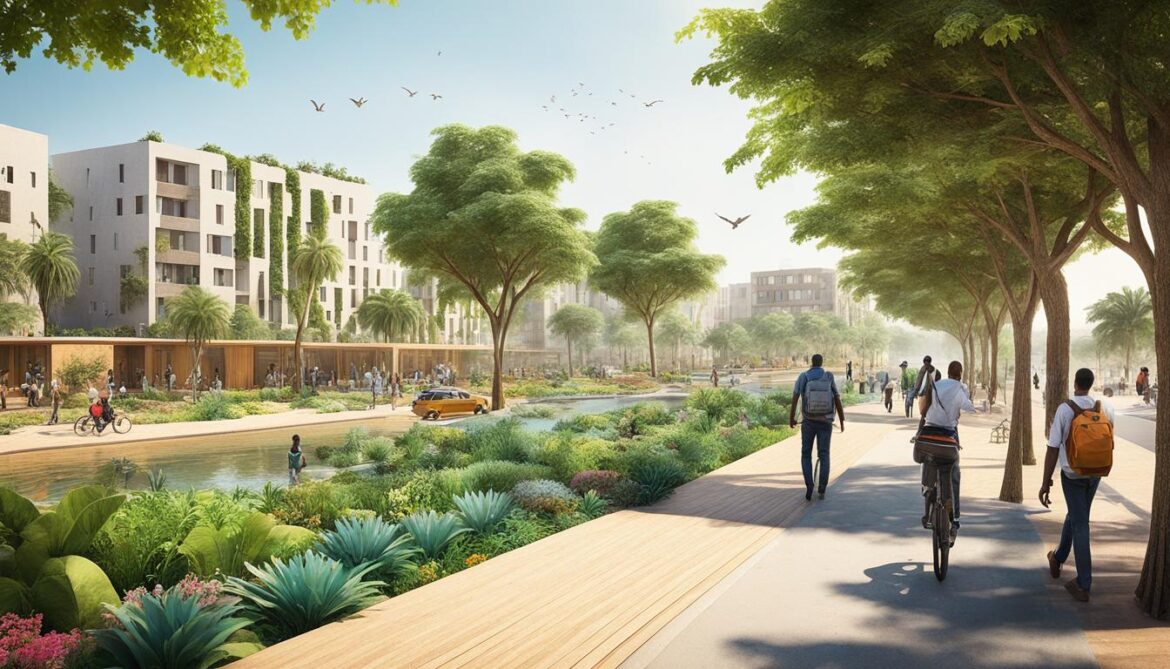
These initiatives and development plans demonstrate Senegal’s commitment to sustainable practices and the balance between human activities and environmental preservation.
The History of Senegal’s Architecture
Senegal boasts a captivating architectural history that draws inspiration from influential figures such as Léopold Sédar Senghor. One particularly prominent architectural style in Senegal is known as “asymmetrical parallelism,” characterized by angular designs that reflect the country’s rich heritage. An iconic example of this style is the 1974 International Fair held in Dakar, which showcased innovative angular architecture. Another notable site is the Manufactures Sénégalaises des Arts Décoratifs in Thiés, where African design takes center stage, showcasing the diverse architectural influences of Senegal.
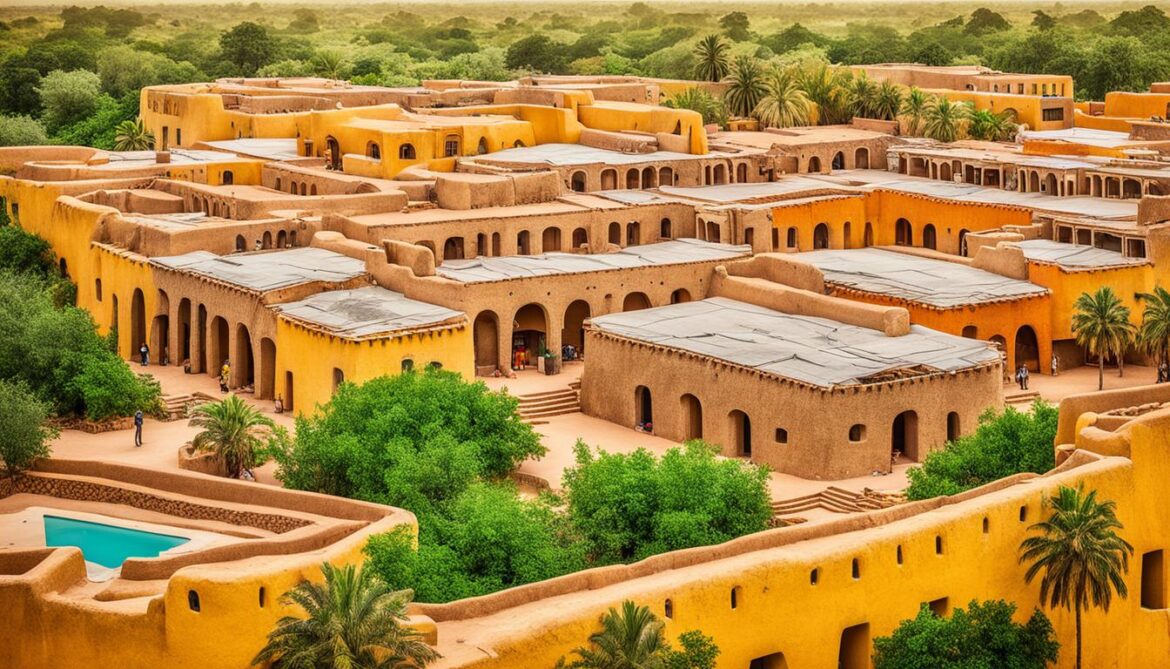
The Founding of DNA
DNA is a design and construction company based in Thiés, Senegal. Founded by childhood friends Mariama Djambony Badji and Papa Mafall Diop, DNA specializes in raw earth bricks and solar power, offering environmentally-friendly and energy-efficient solutions. Despite facing challenges in a male-dominated industry, DNA has gained recognition for its innovative approach and commitment to sustainability.
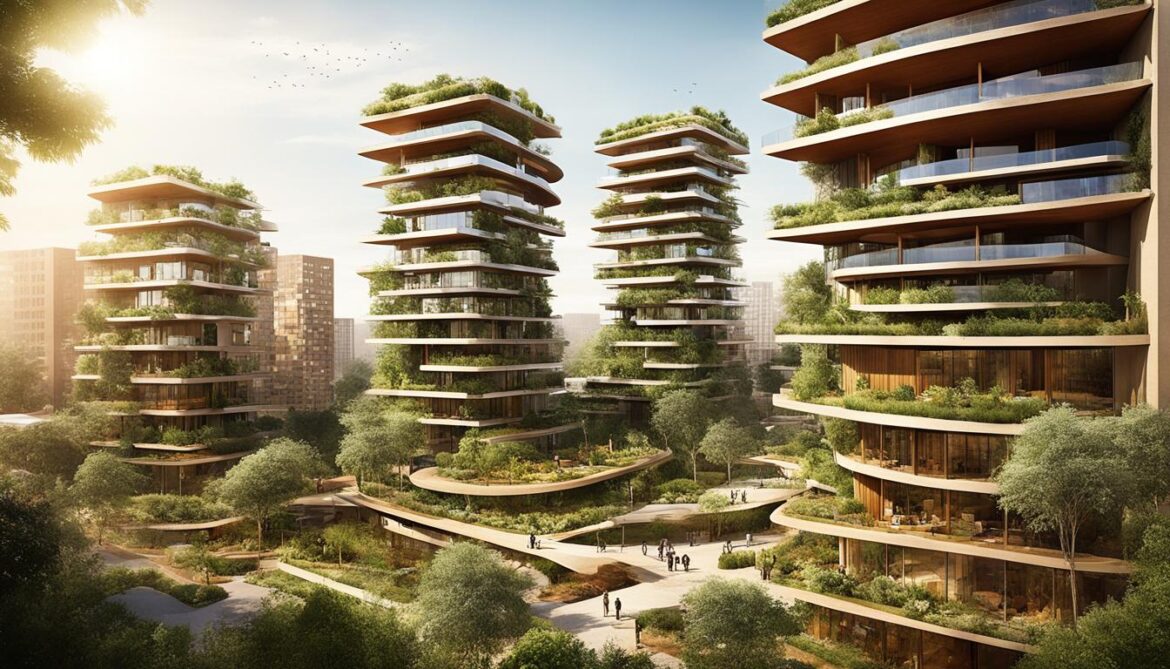
The Benefits of Raw Earth Bricks
Raw earth bricks, also known as rammed earth construction, provide numerous benefits for eco-friendly architecture in Africa and sustainable development in Senegal. One of the key advantages of raw earth bricks is their natural insulation properties, which reduce the need for excessive air conditioning. This not only helps to conserve energy but also lowers carbon emissions, making raw earth bricks a carbon-neutral alternative to traditional bricks.
In addition to their eco-friendly attributes, raw earth bricks are highly durable and long-lasting. They have natural resistance to fire, pests, and weathering, ensuring that buildings constructed with raw earth bricks maintain their structural integrity over time. This longevity contributes to a more sustainable construction process, as it reduces the need for frequent repairs and replacements.
Furthermore, raw earth bricks offer a unique aesthetic appeal with their natural color and texture. When used in architectural designs, these bricks can create visually stunning structures that blend harmoniously with the surrounding environment. This integration of nature and architecture showcases the beauty of eco-friendly construction and promotes a sustainable living environment.
Overall, the benefits of raw earth bricks make them an excellent choice for eco-friendly architecture in Africa and contribute to sustainable development in Senegal. Their natural insulation, durability, resistance, and visual appeal align with the principles of environmental conservation and promote a greener future.
“Raw earth bricks provide natural insulation, durability, and visual appeal, making them an ideal choice for eco-friendly architecture in Africa and sustainable development in Senegal.” – Architecture Today
Comparative Data: Environmental Impact of Raw Earth Bricks vs. Traditional Bricks
| Environmental Factors | Raw Earth Bricks | Traditional Bricks |
|---|---|---|
| Carbon Emissions | Carbon-neutral | High emissions during manufacturing |
| Energy Consumption | Reduced need for air conditioning | Increased demand for cooling/heating |
| Resource Depletion | Sustainable use of natural materials | Extraction of limited resources |
| Waste Generation | Minimal waste during production | Significant waste from broken/unused bricks |
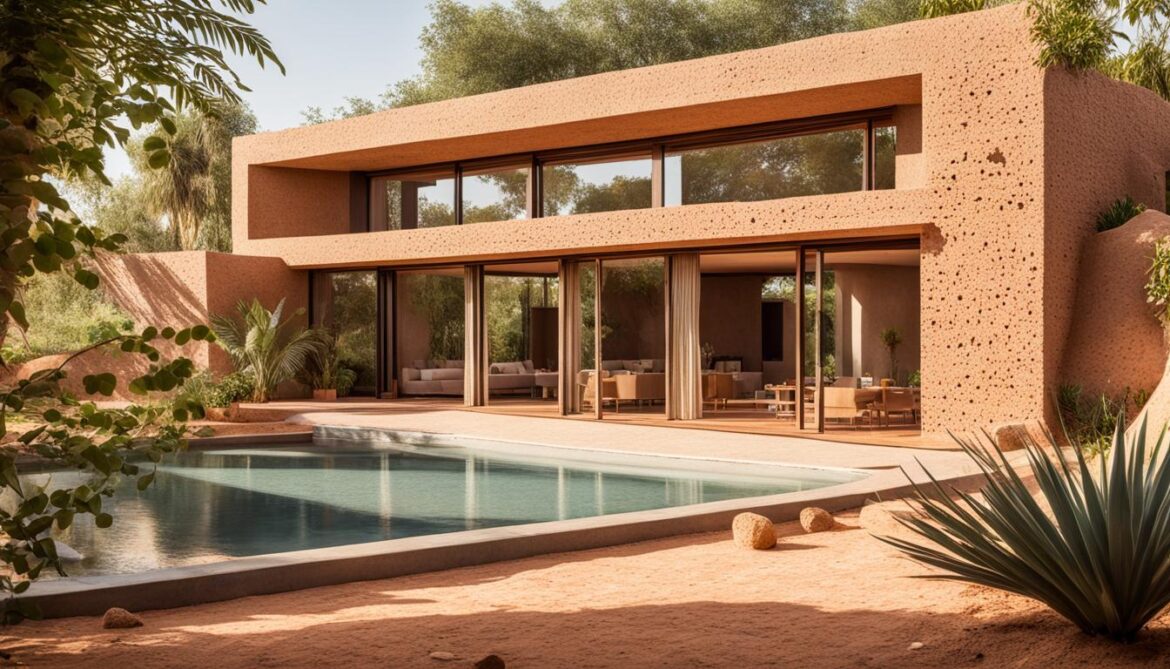
Table: Comparative data between raw earth bricks and traditional bricks, showcasing the environmental impact of each construction material.
Conclusion
Senegal’s commitment to biodiversity conservation and sustainable development is evident in its policies, initiatives, and construction practices. Through integrating biodiversity into national planning, harmonizing legislative frameworks, and mobilizing financial resources, Senegal strives to enhance its environmental sustainability and contribute to global biodiversity conservation endeavors.
Companies like DNA, with their innovative use of raw earth bricks and solar power, are playing a vital role in promoting eco-friendly architecture and driving sustainable development in Senegal. These environmentally-friendly construction practices not only reduce the carbon footprint but also provide natural insulation and enhance the aesthetics of buildings.
With its diverse senegal biodiversity and the built environment, Senegal has the potential to become a leader in eco-friendly architecture in Africa and a beacon of sustainable development in Senegal. By continuing to prioritize conservation and sustainable practices, Senegal can pave the way for a greener and more environmentally conscious future.




